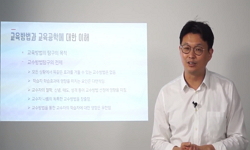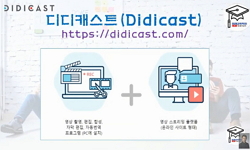본 연구는 AI 도구를 활용한 일본어 작문 수업의 실제 운영 사례를 소개하고 그 교육적 의의를 분석하였다. 구체적으로 수도권 소재 4년제 대학 일본학과의 ‘일본어 작문’ 수업에서 진행된...
http://chineseinput.net/에서 pinyin(병음)방식으로 중국어를 변환할 수 있습니다.
변환된 중국어를 복사하여 사용하시면 됩니다.
- 中文 을 입력하시려면 zhongwen을 입력하시고 space를누르시면됩니다.
- 北京 을 입력하시려면 beijing을 입력하시고 space를 누르시면 됩니다.

AI 도구를 활용한 일본어 작문 교육 방안 연구 ― 영상 자막 번역 프로젝트 수업을 중심으로 ― = A Study on Japanese Writing Education Using AI Tools:Focusing on a Video Subtitle Translation Project
한글로보기부가정보
국문 초록 (Abstract)
수업은 기초 학습 단계, 시범 단계, 실천 단계, 평가 단계로 구성되었다. 초반 4주는 AI 도구의 효과적인 활용을 위한 기초를 다지는데 중점을 두었으며, 이후에는 학생들이 직접 프로젝트를 수행하고 발표하는 방식으로 진행되었다. 특히 실천 단계에서는 학습자들이 자신의 관심사를 반영한 영상을 선정하여 AI 도구를 활용한 자막 번역을 수행하였다. 이 과정에서 다양한 AI 도구의 번역 결과를 비교·분석하고, 가장 적절한 표현을 선택하는 능력이 향상되었다.
연구 결과, AI 도구를 활용한 자막 번역 프로젝트는 다음과 같은 교육적 효과가 있었다. 첫째, 실제적인 언어 사용 맥락에서의 학습이 가능했으며 학습자들의 흥미와 참여도가 높았다. 둘째, AI 도구의 한계를 보완하는 과정에서 더 심도 있는 언어 학습이 이루어졌다. 셋째, 학습자들은 AI 시대에 필요한 비판적 도구 활용 능력을 기르는 동시에 어학 전공자로서의 전문성과 역할에 대한 인식을 새롭게 하였다.
본 연구는 AI 도구를 적극적으로 활용하면서도 인간의 언어 능력을 향상시킬 수 있는 새로운 외국어 교육 방법론을 제시했다는 점에서 의의가 있다.
본 연구는 AI 도구를 활용한 일본어 작문 수업의 실제 운영 사례를 소개하고 그 교육적 의의를 분석하였다. 구체적으로 수도권 소재 4년제 대학 일본학과의 ‘일본어 작문’ 수업에서 진행된 영상 자막 번역 프로젝트의 설계와 운영 과정을 분석하였다.
수업은 기초 학습 단계, 시범 단계, 실천 단계, 평가 단계로 구성되었다. 초반 4주는 AI 도구의 효과적인 활용을 위한 기초를 다지는데 중점을 두었으며, 이후에는 학생들이 직접 프로젝트를 수행하고 발표하는 방식으로 진행되었다. 특히 실천 단계에서는 학습자들이 자신의 관심사를 반영한 영상을 선정하여 AI 도구를 활용한 자막 번역을 수행하였다. 이 과정에서 다양한 AI 도구의 번역 결과를 비교·분석하고, 가장 적절한 표현을 선택하는 능력이 향상되었다.
연구 결과, AI 도구를 활용한 자막 번역 프로젝트는 다음과 같은 교육적 효과가 있었다. 첫째, 실제적인 언어 사용 맥락에서의 학습이 가능했으며 학습자들의 흥미와 참여도가 높았다. 둘째, AI 도구의 한계를 보완하는 과정에서 더 심도 있는 언어 학습이 이루어졌다. 셋째, 학습자들은 AI 시대에 필요한 비판적 도구 활용 능력을 기르는 동시에 어학 전공자로서의 전문성과 역할에 대한 인식을 새롭게 하였다.
본 연구는 AI 도구를 적극적으로 활용하면서도 인간의 언어 능력을 향상시킬 수 있는 새로운 외국어 교육 방법론을 제시했다는 점에서 의의가 있다.
다국어 초록 (Multilingual Abstract)
This study examines the implementation and educational significance of AI tools in Japanese writing education through a video subtitle translation project. The research was conducted in a Japanese writing course at a university in the Seoul metropolit...
This study examines the implementation and educational significance of AI tools in Japanese writing education through a video subtitle translation project. The research was conducted in a Japanese writing course at a university in the Seoul metropolitan area during the second semester of 2024. The course was structured into four phases: basic learning, demonstration, practice, and evaluation. The first four weeks focused on developing foundational skills in AI tool usage, followed by student-led project presentations. During the practice phase, students selected videos based on their interests and performed subtitle translations using various AI tools. They compared and analyzed translations generated by different AI systems, including machine translation and generative AI, to determine the most appropriate expressions. The study revealed several educational benefits. First, students engaged in authentic language learning contexts, demonstrating high levels of interest and participation. The process of selecting and translating content they enjoyed led to increased motivation and active engagement. Second, students improved their language proficiency by addressing the limitations of AI tools. They developed critical skills in comparing and analyzing different translations, considering cultural contexts, and making appropriate linguistic choices. Third, students gained a new perspective on their role as language specialists in the AI era, recognizing that effective AI tool utilization requires advanced language skills. These findings suggest that integrating AI tools into language education, particularly through subtitle translation projects, can effectively enhance Japanese writing proficiency while sustaining learner engagement. This study contributes to developing new pedagogical approaches that incorporate AI tools while fostering human linguistic capabilities in the AI-driven era.
동일학술지(권/호) 다른 논문
-
한일 대학생 교류 프로그램의 교육적 효과에 관한 일고찰 ― 활동 보고서 분석을 중심으로 ―
- 한국일어교육학회
- 김혜연
- 2025
- KCI등재
-
専攻基礎科目「日本語入門」における ティーム・ティーチングの実践報告 ― 「活動」の時間を中心に ―
- 한국일어교육학회
- 나카무라 유리
- 2025
- KCI등재
-
持続可能な開発のための教育(ESD)を目的とした内容言語 統語型学習(CLIL)のモデル開発 ― 韓国人大学生を対象とするCLILの理論的枠組み構築と妥当性の検証 ―
- 한국일어교육학회
- 이이호시 카즈야
- 2025
- KCI등재
-
- 한국일어교육학회
- 현선령
- 2025
- KCI등재




 KCI
KCI KISS
KISS






